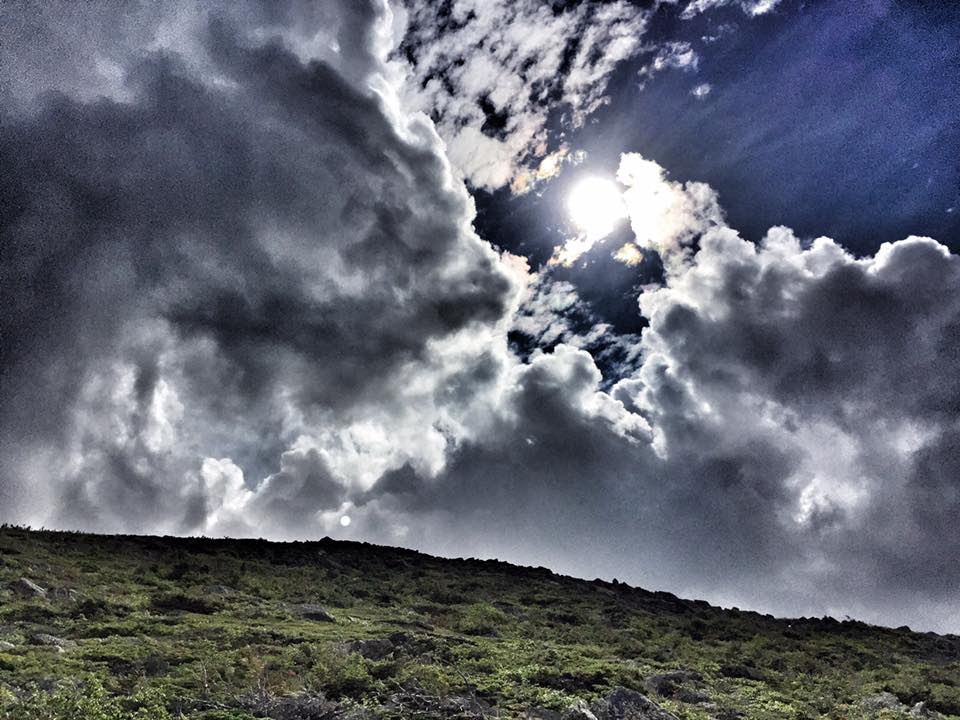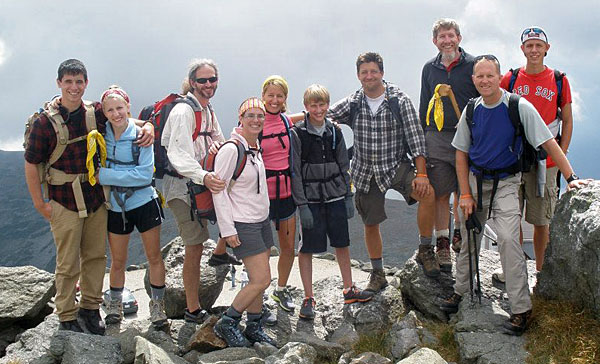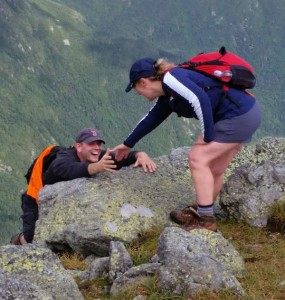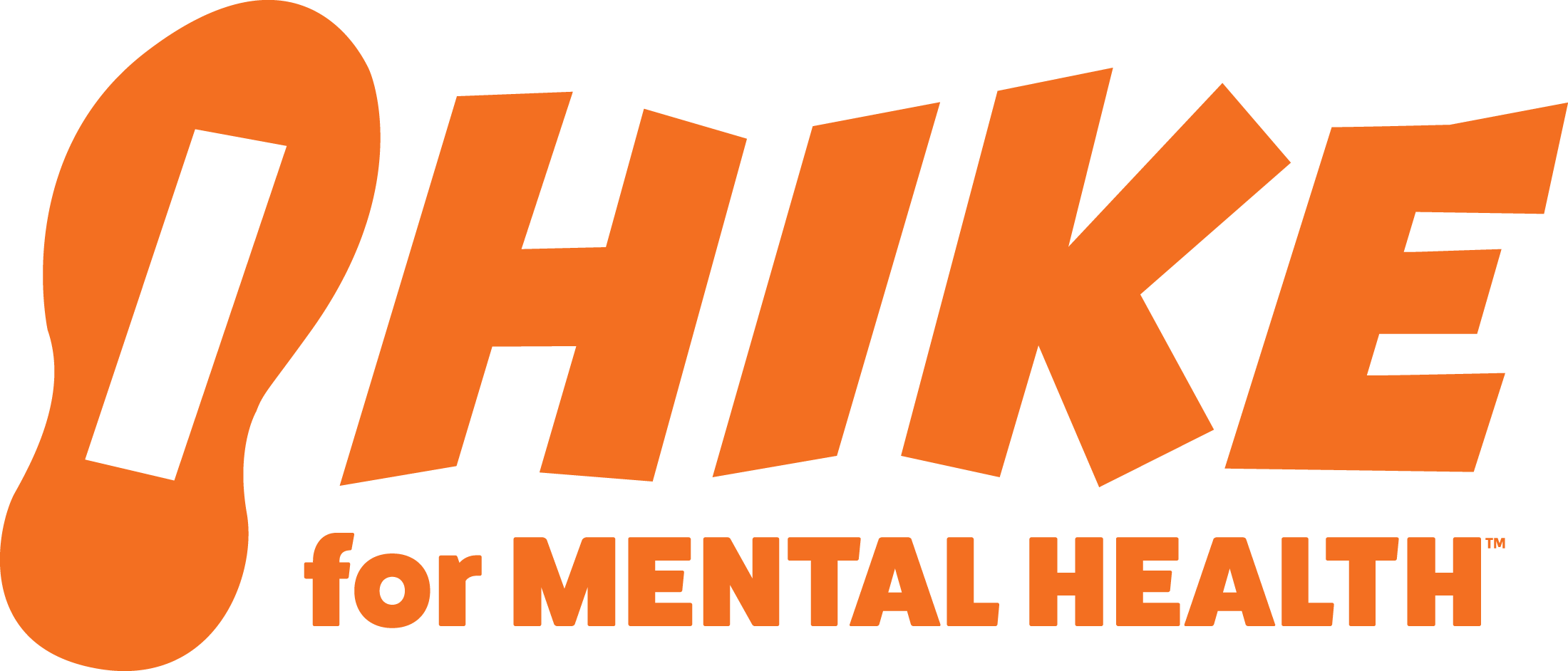The safety practices for hiking safely on Mount Washington are the same as for hiking in general, with extra attention to be paid to the risks associated with the potential for rapid weather changes and for the ruggedness of the terrain. Here are some ways to prepare for a safe and enjoyable hike.
- Very important: prepare yourself mentally, before the hike, to turn back if conditions become dangerous. Once on the trail, with the summit in sight, it can be hard to make that call. It is easier if you begin the hike knowing that the dangers are real and can be life-threatening. If driving rain, sleet, snow, ice, or any other unplanned dangers arise, think safety first. Enjoy the hike the mountain gives you, and return to hike another day.
- Check weather reports. While Mount Washington weather can change quickly, it is still important to check the Mount Washington Observatory current conditions and summit forecast.
- Study the trails on your intended route, especially the trail crossings and junctions where there is potential to take a wrong turn. Know in advance the trail junctions along the way. Realizing on the mountain that you aren’t sure how to read the map is a bad feeling.
- Many hiking preparation lists suggest bringing a map and compass. If you can read a map and compass, that is great advice. If you can’t, it is virtually useless. In that case, stick to well-traffic trails where you know there will be others around, and keep others in sight. Doing this can be a lot easier is hiking as part of group, especially a group with someone who knows the route well. Which brings us the next point…
- Hike with a partner or as part of a group, especially if you are not proficient at reading a map or using a compass. If something goes awry, it is great to have someone on hand to assist.
- Bring proper clothing and equipment.
- Bring a basic first aid kit.
- Prepare yourself mentally to turn back if conditions worsen.


Further reading on Mount Washington day hikes
Looking for more information about day hiking Mount Washington? Here are some pages to check out.
- Clothing and Equipment for a Mount Washington Day Hike
- Getting in Shape to Hike Mount Washington
- Preparing Mentally to Hike Mount Washington
- Mount Washington Day Hiking Trails
- Frequently Asked Questions about Hiking Mount Washington
Learn about our annual Mount Washington HIKE for Mental Health
Interested in joining a great hike, for a great cause? Learn about HIKE for Mental Health's annual Summit Mount Washington day hike.

- Hike Mount Washington with HIKE for Mental Health
- Summit Mount Washington Smashes Goal
- Amazing photos and trail notes from our 2017 hike
- Painting the mountain orange: 2016 Summit Mount Washington photos
- Stunning views of 4th Annual Summit Mount Washington
- Spirits and Funds Reach New Heights on 3rd Annual Summit Mount Washington

If hiking solo, be absolutely sure you’ve told others your route, your expected summit time and expected time back. Give this to a park official along with a photo. If a novice, show your supplies to a camp official. If they find anything amiss, fix it before hiking. Stay on the trail! Even if you need to relieve yourself, never lose sight of the trail. (There was a woman who left the Appalachian trail to relieve herself, got disoriented, and her body was found a year later. Don’t be her!) Better be embarrassed than dead. Have a turn around time and stick to it! If you don’t summit, so what! Enjoy the hike back down, train some more and try again another time. Be prepared for wildlife. Do you need bear spray? What to do if you encounter a bear, mountain lion, bobcat, wolf? Are there venomous snakes, spiders? Bring a first aid kit and know the basics. Think of others you’ll meet. Never push a person to exceed their fitness level. If you think someone is injured or unwell, ask! Even if they say no, if you think something is wrong, tell someone, preferably a faster hiker on the way down. Unless you an EMT or mountain rescue professional, do not attempt heroics! Basic first aid, however, is fine. Cotton wool for blisters, a bandaid, sunscreen, wrap a twisted ankle…
Have fun! Be safe!
Do I need bear spray to hike Mt. Washington??
No, Marty. Bears are not a significant concern on Mt. Washington. Stay on the trails, and you will be fine.
I understand that cell service may be spotty on Mt Washington. Who do I call if my friend doesn’t check in with me by the specified time?
A good starting point for your question can be found on this page in the HikeSafe program: https://hikesafe.com/white-mountains-nh. Be aware there can be significant costs to the hiker for search and rescue so it is best to create a solid plan ahead of time.